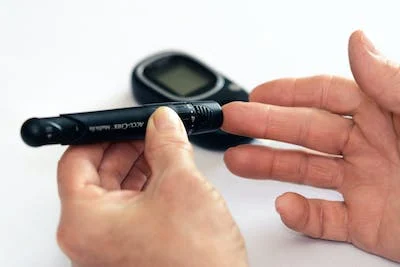Picture this: you’ve recently visited your doctor for a routine check-up, and you receive unexpected news. You’ve been diagnosed with prediabetes, a condition where blood sugar levels are higher than normal but not yet in the diabetic range. It’s a wake-up call, and you may be wondering what this means for your health. The good news is that prediabetes is a window of opportunity—a chance to make positive changes and prevent or delay the onset of full-blown diabetes.
Prediabetes:
A Window of Opportunity Prediabetes serves as a warning sign, indicating that your blood sugar levels are higher than they should be, but not high enough to be classified as diabetes. It is estimated that around 88 million adults in the United States alone have prediabetes, and many are unaware of their condition. Understanding prediabetes and taking action can be the key to preventing or delaying the progression to type 2 diabetes.
Risk Factors and Lifestyle Choices:
Several risk factors contribute to the development of prediabetes, including being overweight or obese, leading a sedentary lifestyle, having a family history of diabetes, and certain medical conditions like polycystic ovary syndrome (PCOS). While some factors are beyond our control, lifestyle choices play a crucial role in managing prediabetes.
Healthy Eating Habits:
Adopting a balanced diet is essential for managing prediabetes. Focus on consuming whole foods, including fruits, vegetables, whole grains, lean proteins, and healthy fats. Limit processed foods, sugary beverages, and foods high in saturated and trans fats. Portion control is also crucial.
Regular Physical Activity:
Engaging in regular physical activity can help improve insulin sensitivity and manage blood sugar levels. Aim for at least 150 minutes of moderate-intensity aerobic exercise per week, such as brisk walking, swimming, or cycling. Additionally, incorporating strength training exercises can help build muscle and further improve insulin function.
Weight Management:
Losing even a modest amount of weight can significantly reduce the risk of developing diabetes. Strive for a gradual weight loss by combining a healthy diet and regular exercise. Aim for a weight loss of 5-10% of your initial body weight.
Regular Check-ups:
Monitoring your blood sugar levels regularly and staying in touch with your healthcare provider is essential. This allows for timely intervention and adjustment of treatment plans if necessary.
Conclusion:
Being diagnosed with prediabetes might feel overwhelming, but it’s a valuable opportunity to take control of your health and prevent or delay the progression to type 2 diabetes. By adopting healthy lifestyle choices, including a balanced diet, regular physical activity, weight management, and regular check-ups, you can significantly improve your chances of reversing the course of prediabetes. Remember, small changes can lead to significant results, and every step you take towards a healthier lifestyle matters. Embrace this window of opportunity and prioritize your well-being for a brighter, healthier future.




